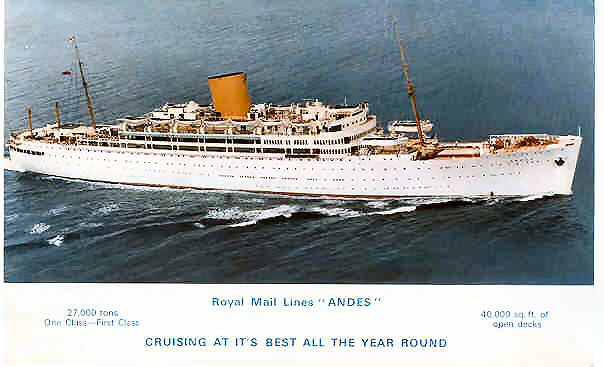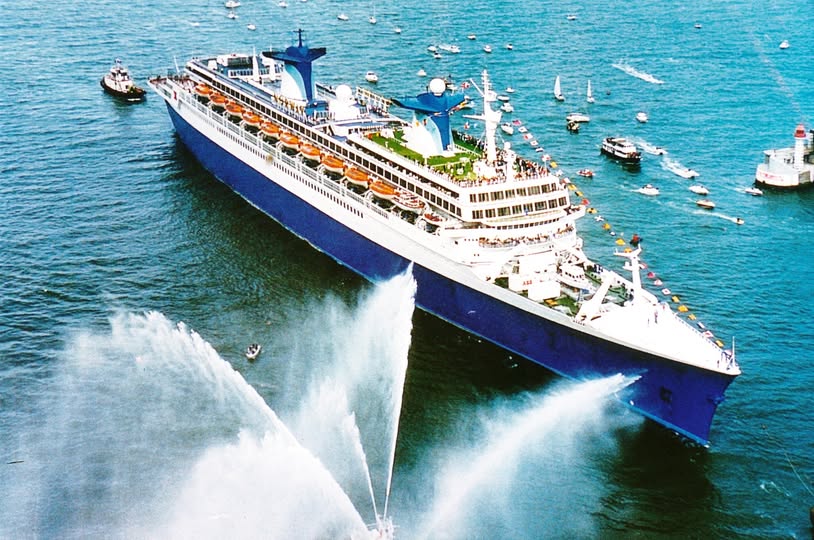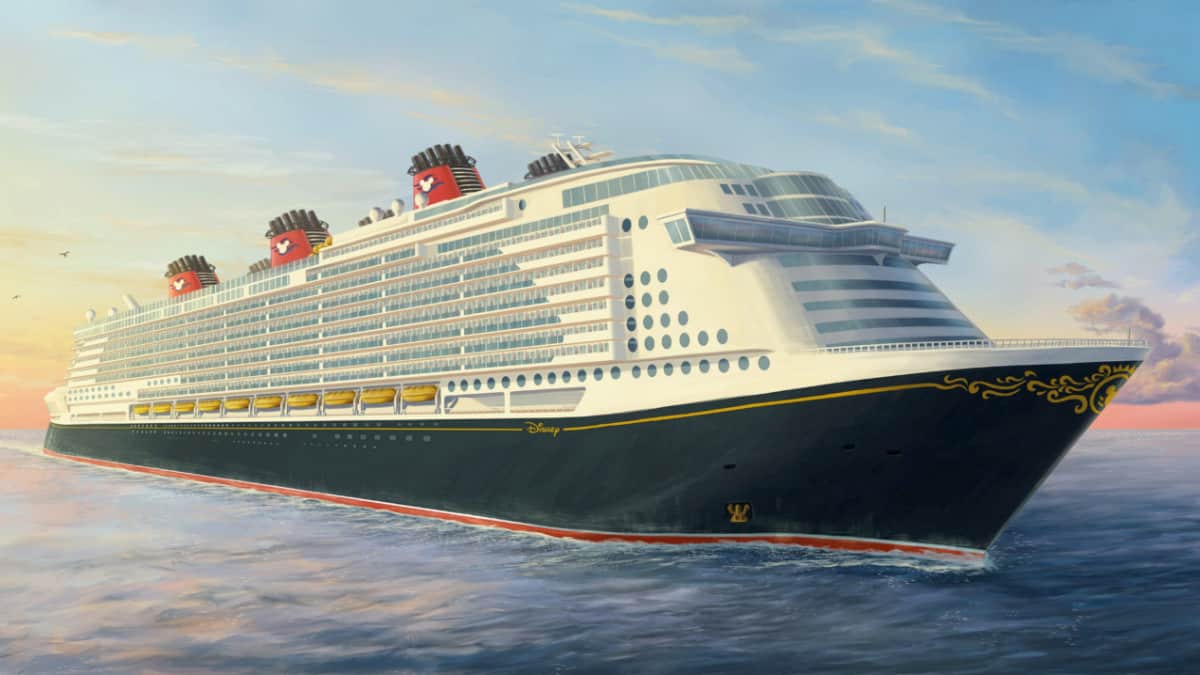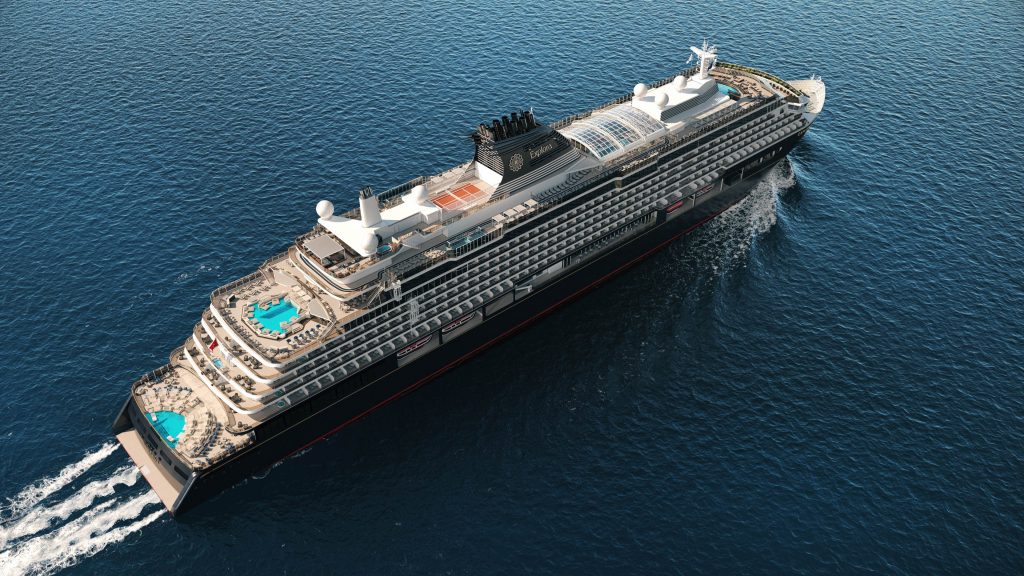One of three contemporary well known British cruise ships, Andes, Caronia and Reina del Mar, Andes can be regarded as one of the finest passenger ships of her time. Andes could compete with Cunards famous Caronia of 1949 in terms of luxury and service.
Originally, she had been built to the highest standards, as Royal Mail intended her to be the finest ship ever on the Latin American run, sailing in direct competition with Hamburg Sud’s Cap Arcona.
While Andes and Caronia catered for the ultra de luxe market, the third notable British cruise ship at the time was the Reina del Mar, which served the middle class market as a tourist-style vessel.
The new vessel was to be suited for both liner service and cruising, be larger and quicker than fleetmates Asturias and Alcantara, and able to cruise at 21 knots (39 km/h). She would be comparable to Hamburg Sud‘s Cap Arcona, although she was marginally faster. Considerable cargo space, most of which refrigerated enabled her to ship meat and fruit from South America back to the UK. Passenger accommodation was originally planned as first and third class, but during construction this was altered to first and second or tourist class (it made things easier when she would shift from liner service to cruising), with a total capacity of 607.
Andes was ordered from the famous Harland & Wolff shipyard at Belfast. Royal Mail Lines were worried because their French competitors Cie. Sud Atlantique who were planning a new liner of their own, measuring about 30.000 GRT, to be named Pasteur. In the first place she would be a fast liner.
Pasteur was launched in February 1938, a year before Andes. At 29,250GRT, with a service speed of 23 knots she outclassed both Andes and Cap Arcona. Pasteur was not completed until August 1939, just weeks before the Second World War began.
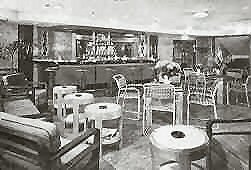
Andes, at 25.600 GRT, although a bit smaller than Pasteur, would have very luxurious interiors. Royal Mail planned her to serve the de luxe market.
Of course, Royal Mail had a reputation to think of, as they had made name in the twenties with the Asturias and the Alcantara, both beautifully appointed vessels.
Because of the outbreak of WWII, Andes did not sail on her intended maiden voyage in 1939. Still in Belfast being fitted out, Andes was hastily converted to a troop transport. During her wartime voyages she visited the Orient, the Pacific and South Africa. She also completed two round-the-world-voyages during WWII. Andes‘ final voyage in Government service started in January 1947, she ferried 2,600 armed forces and 400 civilians to the Far East.
At last, in 1947, she was handed over by the British government to Royal Mail and her luxurious interiors were fully restored.

She emerged with a first class capacity of over 300 passengers and 200 in second class, which was designed almost as luxurious as her first class interiors. She did not have a third class while other ships in this period did have third class accommodations, which were filled with emigrants on the outbound voyage, and with tourists on the return voyage which was very profitable at the time.
Part of her first class accommodtions there were four luxury suites. First class facilities also included a Grand Hall with a dance floor and stage, an observation lounge, library which doubled as a chapel, and a smoking room complete with stone fireplace with timber beams supported by stone corbels and some gorgeous wood panelling, Concealed lighting was featured in many of these public rooms. Second class facilities also included a second smoking room. Many of the Second Class cabins were the same size as those in first class, making it easy to convert Andes from liner to cruise ship. Outside, Andes had vast promenade decks, an outdoor cafe on her sun deck, swimming pools and a sports deck.
Finally, in January 1948, more than eight years after her cancelled maiden voyage, Andes departed Southampton on her first commercial sailing to South America (Rio de Janeiro, Santos, Montevideo ending in Buenos Aires). Royal Mail had sold 100 First Class berths to round trip passengers, who for a £10 supplement could remain onboard Andes in Buenos Aires serving as their hotel.
Between her liner voyages, Andes was used in cruise service, mostly in European waters. In June 1955 she made her first cruise, to the Mediterranean. She mainly continued to sail on the South American run, together with fleetmate Alcantara, but these liner voyages to and from South America were often interspersed with cruises to the Mediterranean or the Caribbean.
In 1953 Andes was fitted with stabilisers. Each stabiliser was 78 sq ft in size and was operated hydraulically. They could be controlled from both the bridge or the engine room.
At the end of the 50s, Andes was converted to a full-time cruise ship. Her liner services were now taken over by a new trio of ships the Amazon, Aragon and Arlanza which had been ordered in the mid fifties.
Andes, starting with her first cruises, had already developed a loyal following. She was refitted at De Schelde shipyards at Flushing in Holland and her first sailing as a dedicated cruise ship was in June 1960. She carried less than 500 passengers, which was a very limited number of passengers indeed, regarding her size.
She was immediately compared to Cunard’s Caronia, one of the the first full time cruise ships serving the de luxe market.

Andes was regarded by many as a floating club house, catering for the very rich, who returned year after year. 60% of her passengers were repeaters which developed into the foundation of the Andes Cruise Club. 500 passengers were being looked after by an equal number of crew members. It was this high level of service Royal Mail aimed at.
Alas, at the end of the sixties, Andes started to fall on hard times. Although refitted as recently as 1967, she became more and more expensive to run as fewer passengers sailed in her and operational costs (fuel, wages) soared.
Royal Mail tried to attract a younger clientele by dropping some of the luxury aspects of her cruises, for example by introducing flashy entertainment, but it did not help.
Ultimately, it was decided that Royal Mail saw no future in passenger shipping altogether. Cargo ships were seen as a far better investment.
In the mean time, Andes started to suffer small mechanical breakdowns, like problems with her engines and airconditioning. Although her last refit of 1967 should have kept her in service until well into the seventies, Andes was retired in 1971.
She was sold for scrap, and was subsequently dismantled at Ghent in Belgium.




